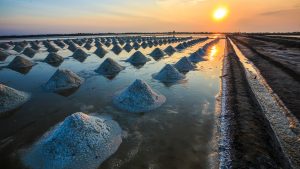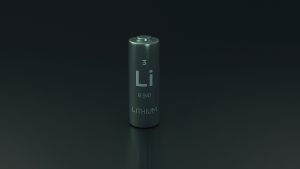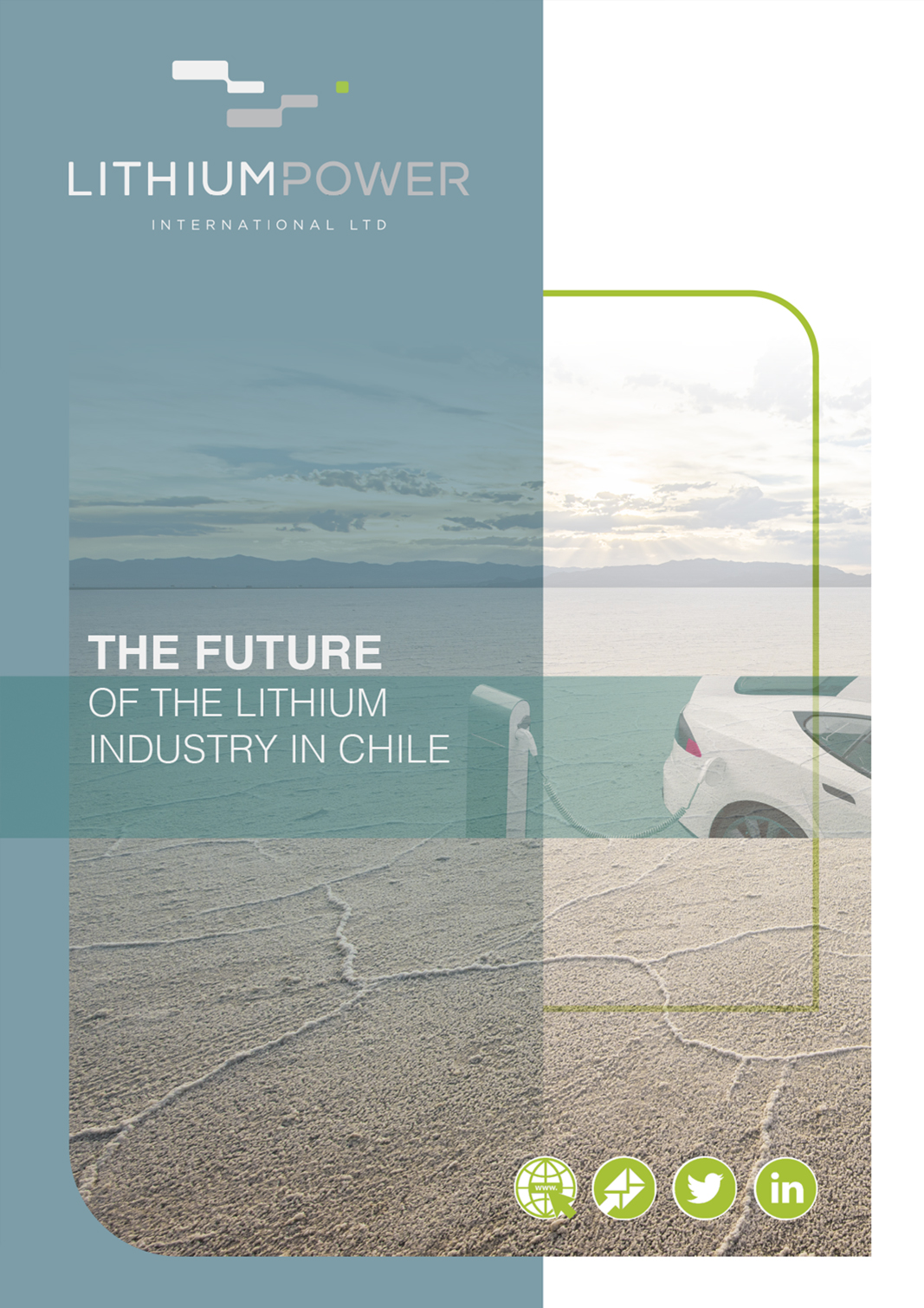In Lithium Power International’s new eBook, Andrew Phillips, Executive Director of LPI, explores Chile’s lithium industry and how the country’s lithium outlook will affect the company’s flagship Maricunga project.
Lithium Power International (LPI) is a pure-play lithium company which is commencing the development of the sustainable and high-grade Maricunga project at a time when environmentally conscious global industries are eagerly seeking clean energy sources to combat climate change.
Critical to the success of the Maricunga lithium mining project is LPI’s close relationships with the indigenous and local communities on whose land the development is sited. Directors of LPI were directly involved in finalising an agreement with these people.
LPI’s principles are based on respecting the customs and culture of these communities, which will receive part of the benefit via a royalty in the project to be paid throughout its life span.
In this eBook, Andrew Phillips, Executive Director of LPI, delves into Chile’s future lithium outlook and how this will affect the company’s flagship Maricunga project.
Chile’s 2023 lithium outlook
Chile’s lithium industry has gained considerable attention in recent years due to its potential applications and wide range of the mineral’s uses.
With its large lithium reserves, Chile’s output is poised to significantly impact the global lithium market. As one of the world’s most important producers of lithium, it stands to benefit greatly from its strategic position as an exporter and supplier.
Lithium plays a vital role in many industries across the globe. It is used in batteries, electronics, and numerous other products. The demand for these goods continues to rise as technological advancements drive innovation and progress. With such high consumption levels, efficient production processes become essential to maintain reliable supply chains.
Chile is home to abundant natural resources, which are essential for supporting the country’s economic development.
Chilean mining operations produce a wide range of minerals and metals, including copper, gold, iron ore, lithium, and silver. Lithium production has become increasingly important in recent years due to its role in powering renewable energy sources such as electric vehicles and smart grids.
Therefore, Chile’s lithium industry can help meet the increasing pressure on demand.

What is the significance of Chile in the global lithium market?
Chile is the second largest lithium supplier, sourced from large salt lakes found in the Lithium Triangle region in the dry north of the country.
The area holds an estimated 54% of global lithium reserves. Production has expanded in recent years as global demand has rocketed for lithium-ion batteries to power EVs and to store electricity.
Chile is adopting a new mining regime to develop additional operations to help fill sky-rocketing demand from global buyers. Two companies, Chile’s SQM and the US’ Albemarle, are the only current producers, but the government wants to expand output during a period of strong global demand. Significant proposals, including one from Lithium Power International, have been submitted. LPI is developing its Maricunga lithium brine project.
How does Chile’s lithium production contribute to the country’s economy?
The value of lithium exports increased dramatically during the last decade, according to Statista. They went from $305m in 2012 to $982m in 2021.
Lithium demand is expected to keep expanding strongly as the world moves to replace fossil fuels with clean energy sources, such as lithium batteries, wind and solar power. Chile also seeks ways to add value rather than simply exporting lithium carbonate in bulk.
Royalties are helping to pay for research, and development programmes are being run by Chile’s economic development agency, CORFO. One relatively low-cost proposal has been to make lithium cathodes for the battery industry.
How do the country’s reserves and production rates compare to other lithium-rich nations?
The first official mention that Chile held significant lithium reserves came in 1969. It has the world’s largest reserves, estimated at 9.3 million metric tonnes.
This compares with Australia’s leading producer, which reached an estimated 6.2 million tonnes. Chile was second, however, with production in 2021 at 25% of the global total. Australia was the largest at 52%.
Many new mines have been developed in Western Australia recently, where most developments are taking place, but Chile may claw back some market share as new projects are developed.
What are the main challenges and opportunities for Chile’s lithium industry?
Chile’s lithium industry is experiencing competition in global lithium markets from new projects in countries other than Australia, including Argentina, the US, Canada and some African nations.

At the same time, the government is resetting its mining laws. These changes will likely lead to mining investments made by government-backed entities alongside commercial enterprises so the entire country can benefit from future returns and expand the scope of lithium-based industries. The government works closely with the private sector to ensure that the outcomes benefit all interests, including the Chilean nation.
What are some of the environmental concerns regarding lithium extraction in Chile?
Environmental policies have been strengthened in recent years, and Lithium Power’s Maricunga project is regarded as being at the forefront because it meets all of the new standards.
The company also intends to become the first zero-emission lithium brine producer. Process water will be recovered and reused through the installation of condensers. Electricity will be supplied via solar power, which is abundant in this dry region. LPI is currently evaluating solar generation on land owned by neighbouring indigenous communities.
It is also planning to use Direct Lithium Extraction (DLE) technology, which is more environmentally friendly, for the second stage of its project.
Chile’s National Lithium Policy
The National Lithium Policy contains elements that are key to the evolution of Chile’s lithium industry, including the promotion of public-private partnerships, a focus on research and technological development, the inclusion of territories, and high sustainability standards.
The Policy is different from the position of previous administrations – the result of a consultation process with a wide variety of stakeholders nationally and internationally.
It has also considered the Chilean State’s objectives, including participating in the efficient and rapid development of Chile’s lithium industry. This is of strategic concern both to Chile and the world as society moves towards electrification.
Regarding the inclusion of communities and the environmental and technical aspects mentioned in the new Lithium Policy, LPI’s Maricunga Stage One project development serves as an example by incorporating all social and community agreements as an integral part of its environmental permit.
What is Chile’s National Lithium Policy, and when was it implemented?
Chile’s National Strategy for Lithium was announced in April 2023 after consultation with various stakeholders nationally and internationally.
Its main elements are:
- The formation of a National Lithium Company;
- The promotion of public-private partnerships, covering all companies with mining contracts rather than nationalisation;
- The State to hold a majority in strategic projects;
- An emphasis on new extraction technologies that minimise environmental impact;
- The active involvement of local communities; and
- The development of a lithium value chain, which could include lithium processing and battery making.
What are the main objectives of Chile’s National Lithium Policy?
Chile aims to become the world’s leading lithium industry to increase wealth, advance technological development, and promote environmental and social sustainability. Other goals include fiscal sustainability, regional growth, and economic product diversification.
Local and international companies will be encouraged to operate alongside the new National Lithium Company, and new extraction technologies will be introduced. The participation of communities near mining sites will be included, and initiatives will be taken to develop value-added products.

How does the policy aim to expand lithium development in the country?
The National Lithium Company is expected to participate with private companies in new developments, holding majority stakes in strategic projects. Chile’s national copper company, Codelco, would seek an agreement with the current operators of the Atacama salt flat.
Other salt flats, such as Maricunga, where LPI operates, will also be included in future agreements. The long-term policy raises the potential to protect some salt flats, modernise the current regulatory framework, create new research institutions and enable Chile to produce transformative products, such as batteries.
What measures has Chile taken to attract foreign investment as part of the policy?
Chile wants to attract more foreign capital to its lithium industry via private-public partnerships. It aims to do this while also strengthening government controls. One area could involve technology, which holds hope for improved environmental mining techniques or access to more efficient processing technologies, such as direct lithium extraction.
President Boric has recently held talks with several dozen foreign investors. Deputy Trade Minister Claudia Sanhueza told an Asia-Pacific Economic Cooperation meeting that talks had been held with more than 40 investors from a dozen countries.
“Our lithium plan will deepen what Chile has with the rest of the world regarding trade and investments,” Sanhueza said.
How will the policy benefit the Maricunga project?
The policy clarifies existing plans for developing a lithium project at Maricunga and helps to advance its construction. LPI recently said that the planned new exploration policies were designed to bring Chile back to the forefront of global lithium production. That move would provide legal certainty and ratify a constitutional framework for investment. LPI believes key elements include the promotion of public-private partnerships, a focus on research, technological development, and creating value-adding and high sustainability standards.
The policy was an opportunity to accelerate the adoption of new standards for lithium projects in Chile. LPI’s Maricunga project is expected to start construction this year and will incorporate new technical and environmental standards, be transparent and include indigenous consultation. The new policy would also allow state-owned companies to proceed with their projects.
What steps does the policy take to protect local and Indigenous communities and protect the environment?
Perhaps the most significant achievement so far is establishing a framework for discussions with communities in the Atacama region of Chile.
Some landowners have been concerned that lithium extraction operations and farming activities should better consider each other’s views. Farmers want to ensure that the importance of their agricultural pursuits is considered when new developments are proposed.
They also wish to input to ensure that the region’s existing industries – mining, tourism, and agriculture – can co-operate more effectively. LPI has established close relations and collaborates with owners on issues including agriculture and access to electric power.
How will the policy boost the country’s economy?
Chile’s lithium industry and the Chilean economy would be boosted by developing new projects, such as Maricunga, and expanding output for the owners of existing operations.
This is critical as other nations, including Australia, the US, and Canada, are rapidly growing their lithium mining and processing facilities. Value adding is critical so processed lithium products can be exported to global markets rather than partially processed lithium carbonate.
Education would benefit from financing research institutes based in Antofagasta seeking advances in low-emission mining and battery manufacturing. Private-public partnerships would be the basis for much of this work.
Maricunga Project
The Maricunga Project is situated 170km northeast of Copiapó in Salar de Maricunga in the Atacama Region of northern Chile. It can potentially support 15,200 t/a production of battery-grade lithium carbonate for 20 years.
The Maricunga lithium brine project could be one of the lowest-cost producers of lithium carbonate globally, with an operating cost of $3,718 per tonne, not including revenue credits from a potassium chloride by-product.
The project also boasts an excellent ESG profile, aiming to be carbon neutral once the operation beds down.
Could you outline the Maricunga project’s resource potential and its work to identify it?
Resources of 1,905,000 tonnes of lithium carbonate equivalent have been outlined. A Definitive Feasibility Study was released in the first quarter of 2022, concluding that a lithium mine at Maricunga would be one of the world’s most efficient producers.

The mine’s first stage would produce 15,200 tonnes of lithium carbonate annually for 20 years. That total estimated output would have an NPV of $1.98bn before tax.
What progress has been made in the year, and what milestones have been achieved?
Ownership of Maricunga has been consolidated so that the development is now fully owned by LPI. Previous joint venture partners, Minera Salar Blanco SpA from Chile and Bearing Lithium Corp from Canada, agreed to sell their direct holdings to LPI in exchange for shares in LPI.
The consolidation will streamline the development by focusing activities around one management and oversight team. The finalisation of financing proposals is continuing, and LPI recently provided comments on the Chilean Government’s National Lithium Policy.
Construction of the project is expected to commence this year.
Have there been any challenges, and how have they been overcome?
Our team at LPI has handled the challenges to work toward a well-considered plan. It helps that we have strong relationships at the government level with local communities and contractors.
The company has also cemented ties with leading global financial institutions, finalising the substantial financial resources required to complete the work.
What are the economic benefits of the project both locally and to the global lithium supply chain?
Maricunga Stage One is being designed to produce 15,200 tonnes of lithium carbonate equivalent annually over 20 years. The operating cost is expected to be $3,718 per tonne. The development will cost an estimated $626m, with $419m being for direct development of the mine.
Once operating, the project is expected to yield a 44.5% internal rate of return based on 50% financial leveraging. Payback is expected to be two years. After-tax net present value is forecast to be $1.4m.
These numbers are based on battery-grade lithium carbonate prices, which are expected to range from $13,263/tonne to $17,616/tonne and are adjusted for inflation.
Lithium Power champions sustainability. How is the company ensuring environmentally responsible practices at Maricunga?
The company settled relationships with environmental authorities and local people near Maricunga some time ago. LPI works with them on environmental projects, the supply of electricity to their settlements and the development of employment opportunities, such as improving the sustainability of plant life.
There is no competing land use on the company-held land. Process technology that has been proven reliable at other similar operations will be used. Conventional, low risk and impact evaporation processes will be used in the project’s initial stage. Supply contracts have been signed for renewable solar electricity. Water use will be low.
Is the company leveraging technologies or innovations in its lithium extraction and processing methods?
Technology can provide significant benefits when used in suitable conditions. The company has recently announced that future expansion at Maricunga would include a Direct Lithium Extraction (DLE) plant to recover 15,000 tonnes per annum of lithium carbonate equivalent.
DLE is a new technology that promises recoveries of over 90%. Testing is being undertaken on freshwater consumption, energy usage, and reinjection requirements.
What is the company doing to build relationships with Indigenous communities?
LPI has established strong relationships with local Indigenous communities, and regular consultations will occur throughout the project’s life.
Maricunga’s environmental permit includes consultation under the 169 ILO international treaty, which protects indigenous rights. Approvals have been given for water use, and projects are underway on monitoring and preserving local fauna and flora.

A solar energy plant built for the development also provides power to local homes. This engagement will develop further as the project develops. Strict environmental controls will be used during the operation of the mine.
Has Lithium Power established any strategic partnerships for Maricunga?
We signed a Strategic Alliance with Mitsui & Co Ltd in May 2021 to advance the project. That is ongoing and has been of considerable use during this pre-production phase of the project. It covers off-take and funding rights for Stage One of the project, potential collaboration on new developments in Chile, and any new technology related to direct lithium extraction.
What does the rest of 2023 hold for the project, and what goals are on the horizon?
We are razor focused on completing the financing for Maricunga and ensuring that development is developed within budget.
LPI will be diligent in ensuring that all agreements are delivered. We aim to produce highly pure lithium carbonate and must ensure that we do that successfully for our team, the locals at Maricunga, the people of Chile, and our shareholders.


